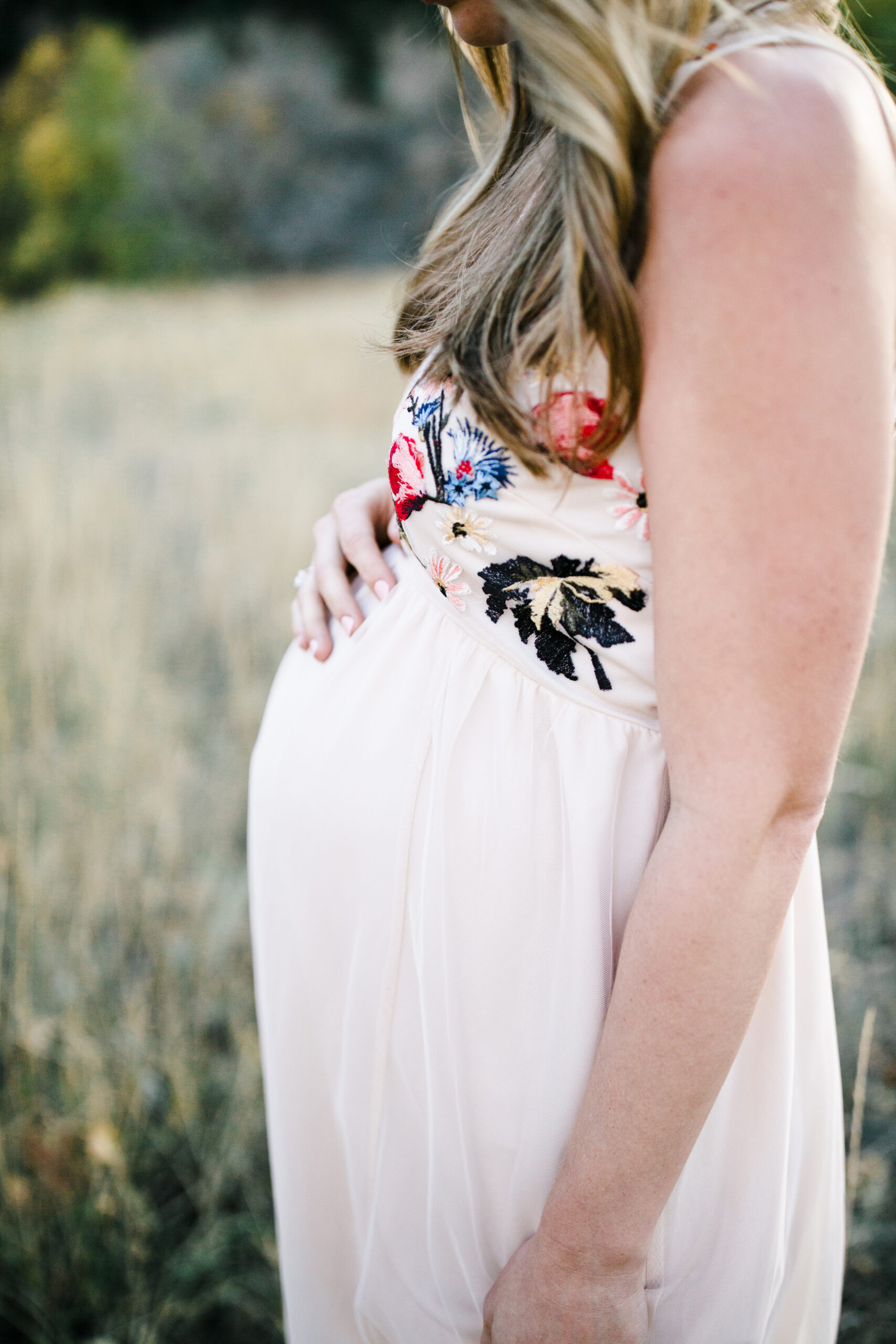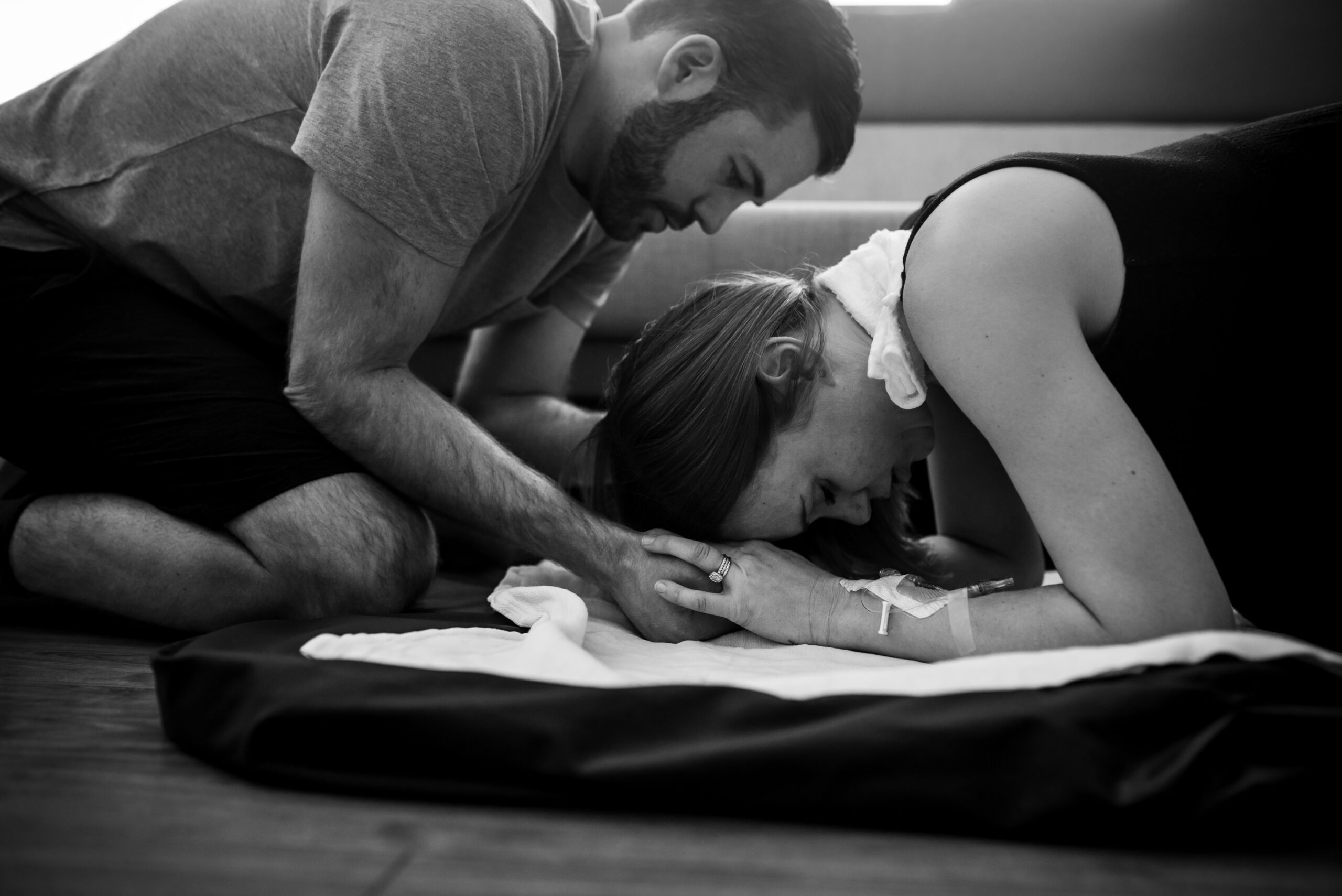Eat your placenta? Yes – it’s true! Placenta encapsulation is a relatively newer trend that some choose to do postpartum. Curious why – or interested in doing it yourself? Let’s chat about the what, why, and how of all of it.
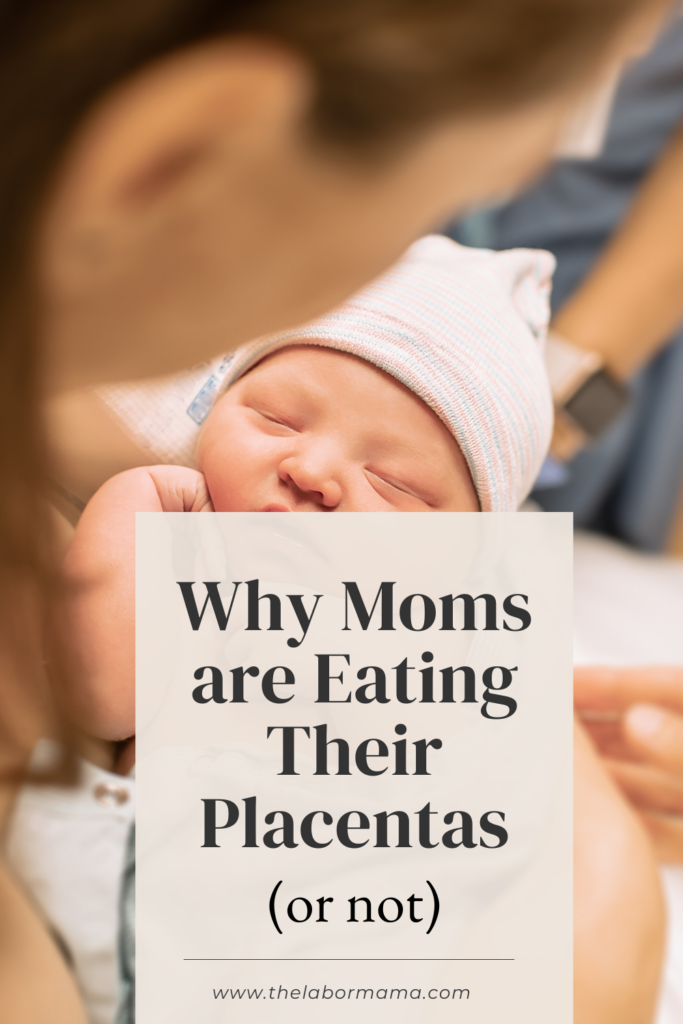
Who is The Labor Mama and Why Am I Here?
Hey friend! I’m Lo – also known around here and social media as The Labor Mama. I’ve spent my nursing career in labor, delivery, and postpartum, have birthed 3 of my own babies, have labored thousands of mamas at the bedside, have taught hundreds of students online, and have even delivered a few speedy little babies with my bare hands (oops).
Here at TLM, I offer online birth classes to empower you the way everyone should be. The education + support I offer gives you experience, evidence, and empathy; you’re getting all of my years of “clinical” RN knowledge, beautifully combined with my real experiences as a mama and a nurse. These are not your hospital birth classes (those won’t do it, I promise), and honestly, birth doesn’t follow a textbook or protocol anyway – you need to know so much more than that.
If you want to connect with me further, head to Instagram. There are hundreds of thousands of us over there learning together daily.
What is a placenta?
You probably already know what a placenta is. It is the amazing organ (that your body grows in a few months!) that nourishes your baby while they’re inside. The placenta is delivered during the 3rd stage of labor, usually within 5-30 minutes after baby is born. If you don’t ask to keep your placenta, the hospital or birthing center will dispose of it as hazardous waste.
What is placenta encapsulation?
The scientific word for “eating your placenta” is placentophagy (or placentophagia). Placenta encapsulation is the process of dehydrating, grinding, and encapsulating (putting into pill form) the placenta after childbirth. You then take these pills orally, as you would any other oral medication. Placenta encapsulation is something that most pay someone else to do for them. Usually, this is a business that specializes in placenta encapsulation, though many doulas offer this service as well. Occasionally, some choose to consume their placenta raw, cooked, or roasted, but placenta encapsulation is the most popular method of consumption.
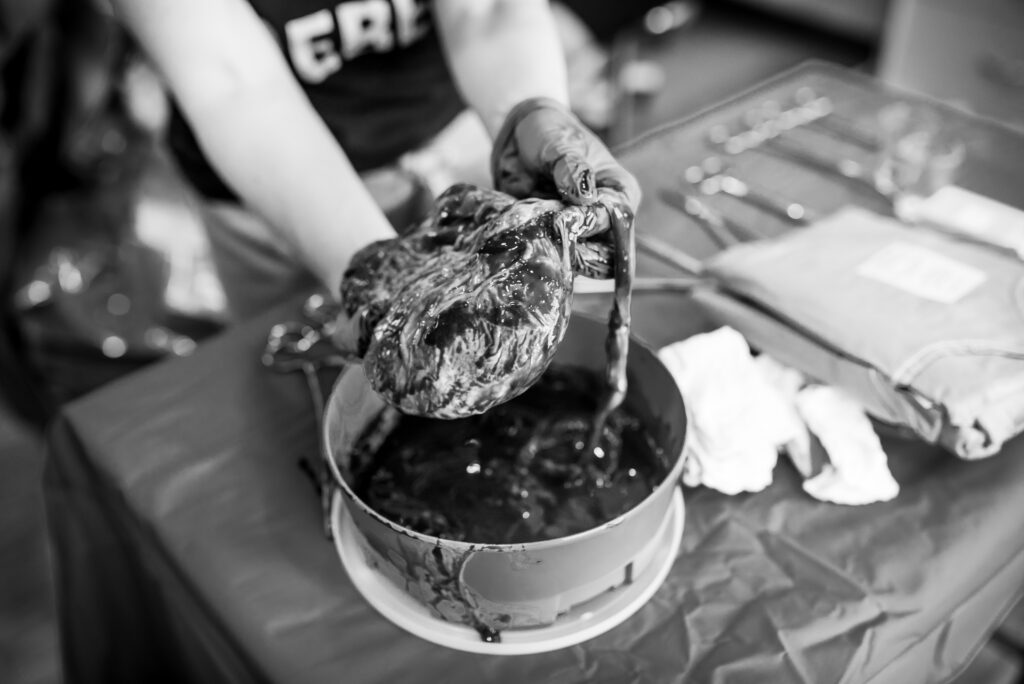
Is it safe to eat your placenta?
In 2017, the Centers for Disease Control and Prevention (CDC) recommended against placenta consumption after a newborn developed recurrent GBS sepsis after their mother consumed GBS infected capsules. Additional research states that the various methods of preparation may not get rid of any existing maternal infections and that there are “no benefits – only risks.” Alternative research indicates that those who consumed their placentas had no worse outcomes for themselves or their babies than those who did not.
Though women and their families are always free to make this choice, here are some times your provider will likely highly recommend against eating your placenta. In these situations, the placenta is often sent to pathology for additional examination and is not freely available to you:
- Known infection during or after labor
- Maternal hypertension or preclampsia
- Active maternal infections (like HIV or Hepatitis)
- Improper storage or refrigeration of the placenta
- Presence of neonatal infection within the first 48 hours of life
Right now, there are no regulations (like from the FDA) for placenta preparation. This means there are no standards for how to make the pills to ensure that they are safe for consumption or how often to consume them. If a placenta is improperly processed, it’s possible that it can harbor bacterias that could make mother or baby sick when the pills are consumed (like the GBS story mentioned prior).
Overall, there is not strong scientific evidence to support this practice. However, the amount of research that has been done on the practice is very small, and many are calling for better research as the trend continues to grow in popularity.
What are the benefits of placenta encapsulation?
Ok, so there isn’t great evidence to show that eating your placenta is safe – but lots of moms are still choosing it. Why? The placenta is full of vitamins and minerals – things like Vitamin B-6 and iron. It is also full of estrogen and progesterone, hormones which fall rapidly after birth and may contribute to baby blues.
Those who believe in placentophagy claim that eating your placenta can increase your milk supply, decrease your risk for postpartum depression/mood disorders, decrease postpartum bleeding, decrease the risk of postpartum anemia, and increase maternal energy. There is no good science to support any of these claims, but there are many women with anecdotal stories that support them.
Personally, I chose to consume my placenta after my third baby. I had a horrible postpartum after my second baby (including DMER), and I was desperate for a different experience. I did my research, considered my breastfeeding history with my other kids, and decided to go for it. Anecdotally for me, that ended up being my best postpartum. I experienced no changes in my milk supply, experienced no depression or anxiety (a massive difference from #2), had way more energy, and my postpartum healing, bleeding and recovery were the best of my three experiences.
In general, we just need more research on the topic. The best study done was a randomized, double-blind, placebo-controlled study and it found that eating the placenta had no impact on postpartum iron levels. There’s also no evidence linking placenta encapsulation to less mood disorders or better milk supply.
What are the cons of eating your placenta?
Eating the placenta could possibly lead to a few different problems, some of which could be very serious for mother or baby. This includes infection, decreased milk supply, exposure to toxins, or blood clotthing issues.
Infection
Since placentas aren’t sterile, they can be the home to pathogens or bacterias. Depending on the encapsulation process and the bacteria present, it’s possible that all harmful pathogens won’t be eliminated before consumption. If you were to ingest a placenta in this situation, it’s possible you could re-expose herself to the infection. If she is breastfeeding, the baby would also be exposed if the infection were able to pass through the breastmilk.
Since is no regulation over the placenta encapsulation process, there is also a risk for infection there. If the placenta is not refrigerated or handled properly, additional infective bacteria could be introduced.
Decreased milk supply
One study in 2017 showed that encapsulated placentas do have low levels of different hormones present, including estrogen and progesterone. Progesterone actually inhibits prolactin, an important milk-making hormone. There are many who believe that eating your placenta and the trace levels of these hormones can then actually hurt your milk production.
Toxin exposure
Part of the placenta’s job is to block heavy metals like arsenic or mercury. Eating the placenta could expose you to water levels of toxins had accumulated in the placenta.
Blood clotting issues
The risk for blood clots is higher than normal in pregnant postpartum women. This is because of elevated levels of estrogen, which increase your body’s clotting factors. It’s possible placentophagia can increase your blood clot risk more since you may be consuming any estrogen that is in the placenta.
The takeaway on placenta encapsulation
The CDC and other governing bodies recommend against placental encapsulation. There is a possibility of risks to both you and baby and there is no evidence to support placentophagia’s purported benefits. However, as the practice of placenta encapsulation continues to grow in popularity, we need better research!
If you are considering placenta encapsulation, please talk to your provider about the risk and benefits related to your body and your baby. If you do decide to take your placenta home, most birthing facilities will require that you sign paperwork and that you have the right materials to transport it (or that the service provider you are using will pick it up).
If you’d like more information, here are two interesting podcasts on the subject: Evidence Based Birth & NICHD
What do you think? Awful? Would you do it? Have you? Can you understand why some may try it? I’d love your (kind) thoughts on it all! xx- Lo
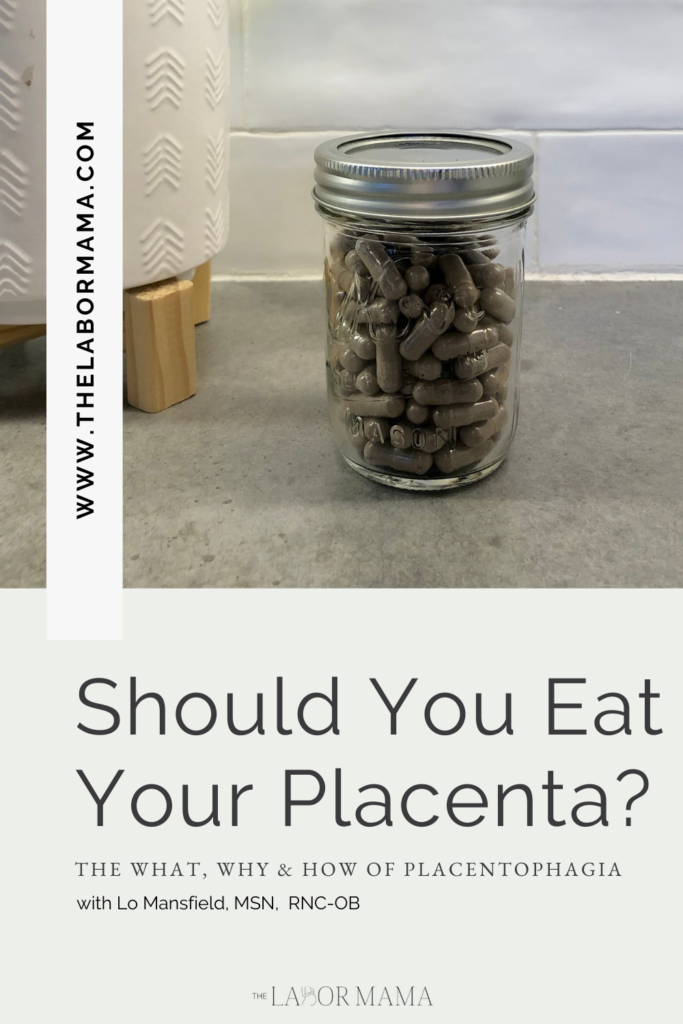
More resources (and freebies!) for you to take a peek at:



